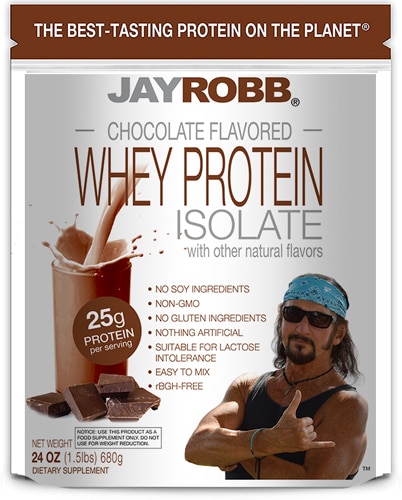Whether we like it or not, the natural aging process slows down protein synthesis and contributes to a decrease in muscle cells, and therefore usually muscle mass and strength.
Couple the negative effects of aging on muscle mass with those caused by common diseases, a sedentary lifestyle, smoking, alcohol consumption and a poor diet, and it’s no surprise that muscle atrophy is so common.
What is muscle atrophy?
The definition of muscle atrophy is “the wasting or loss of muscle tissue.” This condition is the opposite of muscle hypertrophy, which refers to muscle growth and increase of size of muscle cells.
What causes muscle loss to happen? Someone can lose muscle mass, and therefore strength, for a wide range of reasons — including because of their diet, exercise habits, age and if they have a certain disease.
Muscle atrophy occurs when the degradation (break down) of muscle protein out paces the synthesis process of proteins that form muscle mass.
The medical community considers there to be three types of muscle atrophy, which are based on underlying causes:
- Physiologic, the most common and harmless type caused by inactivity (not using the muscles enough). Believe it or not, atrophy can begin as quickly as 72 hours after someone stops using a body part!
- Pathologic, the type caused by aging, starvation/being in a calorie deficit (due to dieting or malnutrition) and certain diseases. When it comes to aging, muscle loss usually naturally starts happening in someone’s 40s. Muscle atrophy associated with aging is also called sarcopenia.
- Neurogenic, caused from an injury or from a number of diseases that damage nerves that connect to the muscles.
Many different diseases can lead to muscle atrophy, some of which include:
- Cushing disease
- Amyotrophic lateral sclerosis(ALS, or Lou Gehrig disease)
- Cancer
- Carpal tunnel syndrome
- Guillain-Barre syndrome
- Polio (poliomyelitis)
- Spinal cord injuries
- Muscular dystrophy and other diseases of the muscle
- Osteoarthritis and rheumatoid arthritis
- Nerve damage caused by injury, diabetes, toxins or alcohol
- HIV/AIDS
- Heart failure
How do you know if you’re affected? Here are some signs and symptoms associated with muscle atrophy:
- Loss of movement and strength
- Exercise limitations
- Fatigue
- Reduced range of motion
- One limb that appears smaller than the other
- Poor quality of life, especially if someone is bedridden and cannot move their limbs
Best Natural Remedies to Prevent Muscle Loss
How do we stop muscle loss from happening?
1. Get regular exercise
Here’s a scary finding: inactive adults tend to lose as much as 3 percent to 5 percent of their muscle mass per decade after the age of 30.
Do any of these situations sound familiar to you?
- You spend much of the day sitting down, such as at work or during your commute
- When you have free time you engage in limited movement and don’t regularly practice hobbies that involve activity
- You spend lots of time watching TV, using the computer, reading, etc.
- You’re rarely outdoors doing something active like walking or gardening
If so, then the first step is to get moving! Exercise has been shown to improve strength, aerobic capacity and muscle protein synthesis, not to mention that it benefits your mental health, too.
Many types of exercises can help ward off muscle loss, such as strength-training, yoga, tai chi or swimming exercises, for example.
Resistance training exercises, which can include using weights or your own body weight, help to build muscle fast and reliably, usually within just several weeks when you’re consistent with workouts.
Ideally aim to do something active every day, even for just 20 minutes. Try to schedule in more formal bouts of exercise a minimum of three times per week for 30 to 60 minutes to help slow muscle loss.
2. Try physical therapy
Visiting a physical therapist is helpful if you’ve experienced injuries or muscle loss due to a degenerative disease. For example, physical therapy exercises, with enough effort and consistency, have even been shown to help restore proper neurological signals that control muscle movement in those with impairments.
For people with limitations due to pain or injury, swimming in a pool, cycling or doing rehabilitation exercises with a professional can all be beneficial for improving strength.
If you find these types of activities to be uncomfortable, talk to your doctor/therapist about wearing supportive footwear, splints or braces that can potentially help.
3. Eat a healthy diet with enough protein
A balanced diet, adequate calories, and enough protein are all important for maintaining muscle mass.
Health authorities generally recommended having at least 50 grams of protein per day (or 0.8 gram per kilogram (g/kg) of body weight) if you’re an adult man or woman over the age of 19. If you’re active or experiencing muscle loss then having even more may be beneficial, such as 1.2 to 1.5 grams per kg body weight daily.
The densest sources of protein in your diet are animal-derived protein foods, including beef, lamb, poultry, fish, eggs and dairy products, however plant-based protein powders, soy products, beans, whole grains and nuts can contribute to your daily intake of protein, too.
For the sake of keeping inflammation at bay, it’s also wise to increase the amount of anti-inflammatory foods you eat, like green leafy vegetables, berries, citrus fruits, flax seeds and walnuts, fresh herbs, etc.
4. Quit smoking and reduce alcohol intake
Cigarette smoking has been associated with increased inflammation, higher risk for many chronic health problems, low levels of physical activity and impaired nutrition. Some studies have also found that smokers tend to have lower relative skeletal muscle mass and more muscle dysfunction compared to adults who never smoked.
Similarly, there’s evidence that adults who over consume alcohol are more as risk for developing low muscle mass and poor strength, muscle pains, cramps, difficulties in gait, and falls. And let’s not forget that alcohol can contribute to fat gain and increased inflammation.
This means it’s best to take whatever steps necessary to quit smoking and to drink only moderately, meaning no more than one to two drinks daily.
5. Visit your doctor & check your medications
If you notice a sudden decrease in muscle mass and strength, it’s a good idea to visit your doctor to rule out any underlying health concerns.
Your doctor might want to run certain tests, measure parts of your body, discuss your symptoms, and review your use of medications. Although it’s not usually needed, surgery may be recommended if an injury is preventing you from staying active.
It’s possible that overuse of some medicines, such as corticosteroids which help control inflammation and pain, may be contributing to the issue. If so, you’ll need to adjust the type and/or amount you take.
While you’re at it, speak with your doctor about supplements that may help to curb muscle loss and inflammation, such as omega-3 fatty acids, collagen protein and glucosamine.




